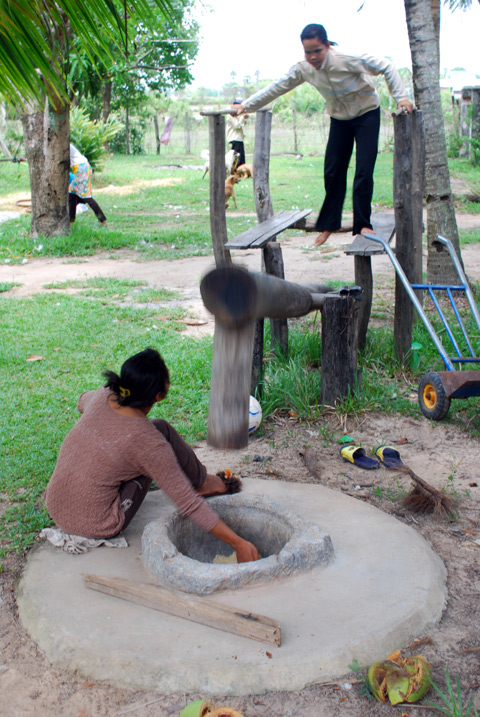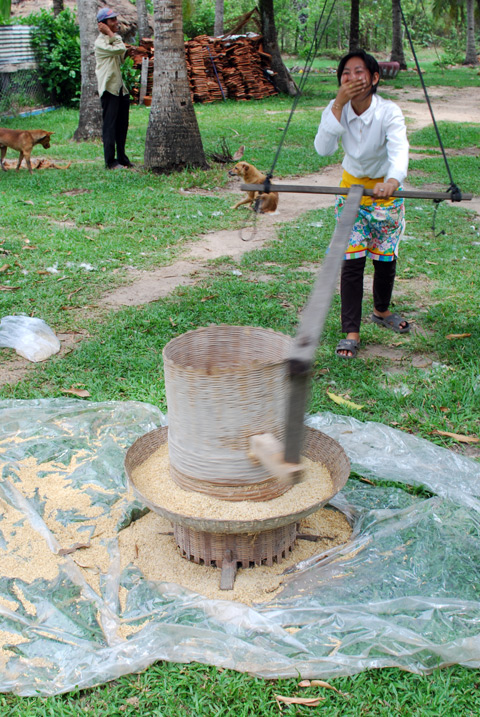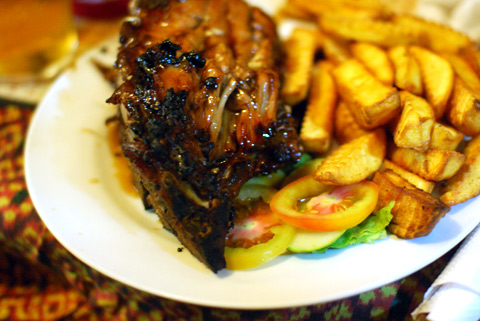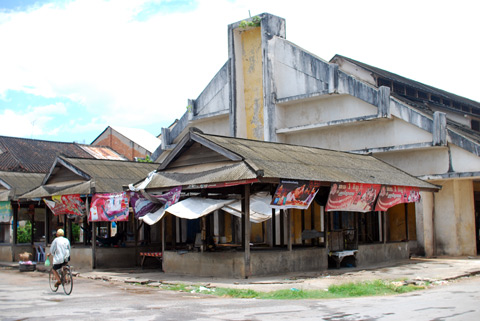You grow it, pick it, then hull it. Then you cook it in every manner imaginable. That amounts to my entire knowledge of rice production.
For a foodstuff that is central to Cambodian life and covers 90% of the total agricultural area, Phnomenon contains of very little rice information apart from the culinary end, mostly because I tend not to like stepping onto the toes of the hundreds of agriculture experts whom have succeeded in pulling Cambodia out of starvation. Keep up the good work and that donor cash flowing. There are other bloggers out there much more qualified to entertain you with tales of Cambodian agriculture.
As for the purely mechanical side of rice production, my guess is that Cambodia lacks milling capacity and unprocessed rice floods across the border into Vietnam. Otherwise, milling is by any means at the farmer’s disposal. Here is one method: hand-milling.
Hull the rice in one of these.
I have the weird effect that when I ask if I can photograph someone in Khmer, they tend to say yes, then laugh at me, partly out of embarassment, partly because no one seems to know why on earth I’d be interested.
As for the results: much poorer than you’d get out of a commercial rice mill. It’s probably trendier for me to say that artisan-produced, hand-pounded rice is fantastic but it’s not. It is wildly inconsistent and contains far more broken rice; still tasting like the rice bran rather than something more fragrant.







